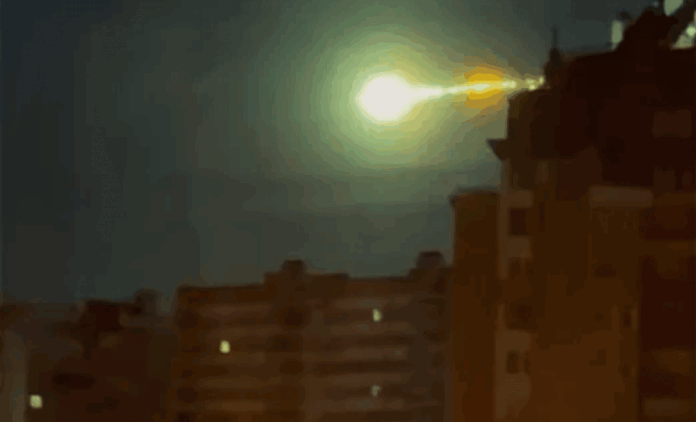
Case Intel
- A vivid emerald flash over Moscow before dawn on October 27 lit up social feeds and a lot of nerves; Russian experts say it was likely a small asteroid fragment or meteor, and there’s no reported damage.
- The timing lands as Moscow astronomers tell residents they’ll soon be able to try for views of interstellar visitor 3I/ATLAS near perihelion on the night of October 29, sharpening public attention on what’s in the sky and who’s watching.
- Planetary-defense policy is no longer abstract: both Russia and China are formally seated at the UN-endorsed coordination tables (IAWN/SMPAG), and China has announced active asteroid-defense build-outs—steps that could either foster cooperation or trigger strategic friction if national plans collide.
USA HERALD – Eyewitness videos from multiple Moscow districts captured a bright green bolide that fragmented and faded in seconds. The hue and breakup profile match a meteoroid ablation signature; early reads from Russia’s Institute of Space Research (IKI) and coverage in domestic press framed it as most likely a small asteroid fragment, while some researchers cautioned that the precise nature requires trajectory analysis.
No injuries or damage were reported. For context, Chelyabinsk in 2013 remains the benchmark for urban vulnerability—a superbolide that shattered windows across thousands of buildings and injured nearly 1,500 people.
The viral flash also revived a pragmatic question: who, exactly, is on point if the next object isn’t harmless? The International Asteroid Warning Network (IAWN) exists as a standing alert system, and the Space Mission Planning Advisory Group (SMPAG) offers inter-agency planning advice for mitigation options. Both are UN-recommended constructs; they do not command states, but they aim to harmonize detection, messaging, and—if needed—mission concepts for deflection.
Current SMPAG membership explicitly lists Roscosmos (Russia) and CNSA (China) alongside NASA, ESA, JAXA, and others, which matters when events cross borders or orbits. IAWN
China, for its part, has moved from concept to program. CNSA joined IAWN and SMPAG in 2018, embedded planetary defense in the 2021 national space white paper, ran domestic and international exercises, and has publicly signaled near-term testing of kinetic impact and other mitigation techniques, including recruitment of a “planetary defense” cadre. These steps—while sensible from a risk-reduction standpoint—also have dual-use optics in a world attuned to counterspace capability. Deep Space Exploration Laboratory
Russia does not publish a standalone “planetary defense plan” akin to NASA’s PDCO playbook, but it participates through Roscosmos at SMPAG and via scientific institutes like IKI, whose labs routinely brief the public on noteworthy NEO passes and fireball events. That integration matters in early hours when distinguishing a meteoroid entry from satellite debris or a re-entry is essential for civil defense and airspace decision-making.
Here’s the hard part no one should soft-pedal: national planetary-defense actions can collide—literally and legally. A unilateral deflection that nudges risk off one country and onto another would land squarely in unsettled law.
SMPAG’s Legal Working Group has flagged the gaps: who authorizes a deflection, what liability attaches if the outcome shifts impact probability to a different state, and how consent is managed on compressed timelines. The 1972 Liability Convention makes launching states absolutely liable for surface damage by their space objects, yet it wasn’t drafted with kinetic-impactor deflection missions in mind.
Think through the edge case: fragments created by a deflection mission launched from State [A] later damage infrastructure in State [B]; which forum, which standard, and which proof? That’s precisely why lawyers and mission designers are now working in the same room. Ad-Hoc Working Group on Legal Issues to SMPAG
Against that policy backdrop, 3I/ATLAS is about to round the Sun. Moscow’s planetarium has primed the public that it may be observable locally around October 29 if conditions cooperate.
Even if the Moscow fireball was unrelated—and current expert reads say it was—these two storylines now run in parallel: a rare interstellar object drawing eyes skyward and a very terrestrial test of how quickly institutions can separate spectacle from threat.
***
For deeper coverage of 3I/ATLAS, and legal assessments of planetary defense, join me on Patreon.


